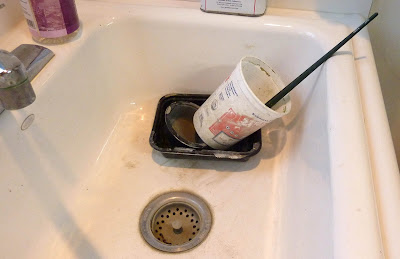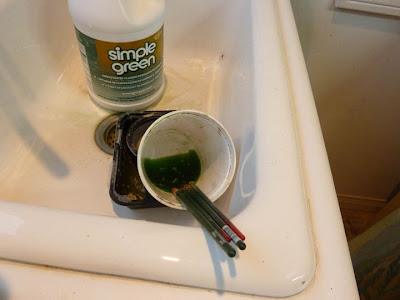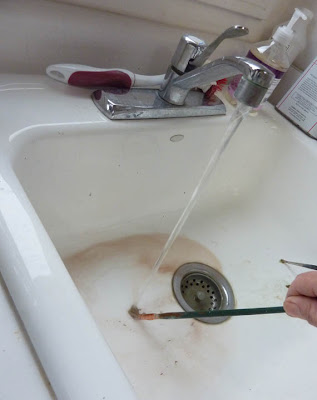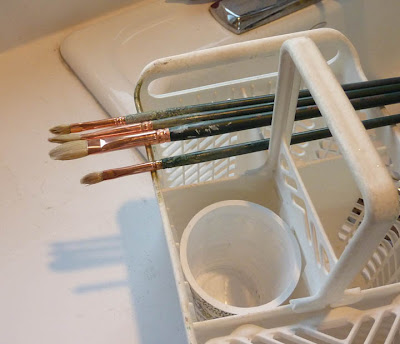After years of cleaning brushes and all the different methods I have tried, (brush soaps, shampoo, conditioners, oils…etc., the method illustrated below is the quickest & simplest method and will keep your bristles in beautiful shape and flexible for a long and useful life.
One note about the lasting quality of brushes: if you paint on a rough, course linen or canvas, your bristles will wear down, much like running acarrot over a grater. Your brushes will wear regardless of how you clean them.
HERE IS MY BRUSH CLEANING METHOD:
First wipe the excess paint from your brush using a rag or paper towel.
Next, use your cleaning solution, thinner. I like Gamsol, as my thinner-cleaner solution as the emissions from this solvent is lower than other mineral spirits.
Swish the brushes in the Gamsol and get the majority of oil paint off. Do not scrub the brush- just swish them with some vigor.

Now- it gets easy- set the brushes in a solution of concentrated Simple Green. You want to place your brushes so the brush-handle rests against the side of the solvent container (as shown below). This will keep a minimal amount of pressure on the bristles and they won’t loose their original shape.

You will want to make sure the bristles and the very bottom section of the metal ferrule is immersed in the Simple Green. Do not let any part of the wood handle to be in contact with the Simple Green. Simple Green is very effective in removing paint and it will also remove the paint from the handle and the glue attaching the ferrule to the wood handle.

I leave the brush in this solution overnight and then rinse under cool water the next day. (I have left my brushes in Simple Green for days, with no damage)
When rinsing your brushes, do it under a good stream of water and press the bristles against the bottom of the sink, again do not scrub it. If it seems there is still paint left up in the ferrule, put the brush back in the solution for another day. Paint trapped in the ferrule will cause your bristles to eventually fan out and loose their shape.

When you are satisfied the bristles are clean, tap off excess water and leave to dry in a horizontal position where air can circulate all around the brush. Your brushes should be dry by the next day and ready to use. Note, some pigment colors will stain the bristles, and this does not affect the life or flexibility of the brush.

Note: You can also remove dried on paint from palette knives in the same way. Leave only the metal blade in the simple green, you will be able to wipe the built-up paint off after leaving them soak for overnight, maybe longer if you have a lot of build up. Remember… don’t let the handle be in contact with the Simple Green- only the blade.
Happy Painting!









